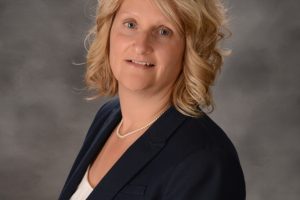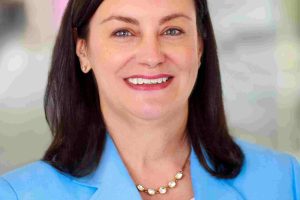The convergence of a hardening professional liability insurance market and the global pandemic is resulting in “predictable uncertainty” (1). Successful health care risk managers have the skills needed to straddle the two worlds of predictability and uncertainty. This expertise positions risk professionals to appreciate threats and opportunities resulting from this intersection. There are several domains or areas professionals must consider when analyzing risks across the enterprise. Claims and insurance management are important drivers in the financial domain.
Not all risk managers are responsible for working directly with brokers or underwriters to provide data and information used to calculate premiums, even though risk management programs receive rigorous scrutiny in this process.
Many 2020 risk management conferences included sessions about internal and external drivers contributing to the hardening professional liability market. The September 2020 Crittenden Conference featured the seminar, “Examining Evidence of Hardening Medical Professional Liability Market.” Having worked through both hard and soft markets in Pennsylvania, and with a number of tort reform efforts, I was intrigued with the perspectives presented at this conference. This article reflects my interviews with the presenters. I am grateful to Linda Jones, managing director, Marsh; Robert Allen, president, ProPraxis Insurance; and Jamie Shooks, actuary, Milliman Inc. for their gracious willingness to share their expertise.
Soft and hard markets
In health care, we have enjoyed long periods of uninterrupted soft markets where we saw low rates, high limits, flexible contracts and a high availability or high capacity of coverage. In soft market conditions, insurance carriers enter growth modes to expand their market share. They offer inexpensive and competitive premiums with attractive policy terms, nearly producing bidding wars where underwriting practices and procedures are not stringent. The ratio of losses to premiums earned rises. Consistent high loss ratios indicate poor financial health with the carrier possibly not collecting enough premiums to pay claims and expenses and make a profit. After a period of time, industry profits reduce and market correction occurs. This market firming is the transition from a soft to a hard market when carriers move out of growth mode and re-evaluate their books.
In 2018, insurance industry analysts began to report hardening market signs. An August 2018 article, “The Healthcare Liability Market is Changing: What Risk Managers Need to Know” (2) cited three drivers:
- Losses are growing more severe and more frequent
- Hospitals are getting bigger as are their risk profiles
- Liability insurance capacity is eroding
By October 2019, many industry experts were concluding that the market was hardening. In, “5 Trends Signaling a Hardening MPL Market and What Insurers Should Do,” (3) the authors observed these signs:
- Efforts to reduce frequency losing effectiveness
- Claim severity climbing
- Electronic medical records making litigation more attractive
During our interview, Shooks addressed eroding capacity in liability insurance, explaining that insurers are exiting the market, and those remaining are becoming more selective, and pricing premiums higher. Jones cited an example of one large physicians group that experienced a 40% premium increase last year and was projected to have an additional 40 to 50% increase this year. This premium increase became a sustainability issue for the physicians group. Ultimately, they chose a smaller Risk Retention Group (RRG), which was financially not as strong as the alternative carriers.
Shooks noted that many insured are willing to take on more risk themselves. He added that you want to be proactive in risk management but improvements made today are not likely to immediately result in better pricing since it can take a number of years for the changes to be fully reflected in the data actuaries use in their approach to pricing. He suggested self-insurance programs as an option for organizations with strong risk management programs.
Hard Market Risk and Claims Management
Jones, Shooks and Allen said that some hospitals are furloughing risk management staff, which is problematic from an underwriting and broker perspective. When risk management is functioning remotely rather then onsite, Allen asserts there are lost opportunities. Additionally, his opinion is that risk management services provided by insurance carriers may be too generic to result in mitigating risk and improving the risk profile enough to make a difference in premium calculation.
Jones points out that in a hard market, highlighting successful risk mitigation activities is essential. When meeting with underwriters, share all your risk management efforts for the previous year particularly those related to cyber security. Underwriters look for the “differentiators,” the specific program implementation and outcomes that elevate your risk management program from others. It is not enough for risk management to claim that it is following regulatory guidance; it must demonstrate what efforts make them better at identifying and managing risk exposures.
All the panelists emphasized accurate and timely reporting of incidents, claims and potentially compensable events (PCEs). Underwriting needs to understand an organization’s specific risk identification processes. Jones said that one tool used to measure the effectiveness of a hospital’s risk identification techniques is the lag time between when an incident occurs and when it is opened as a claim. Risk managers should be able to describe the risk identification process and actions taken during this lag time, such as mitigation and reserve setting for PCEs.
Reporting Triggers
Initially with COVID-19, everything was being reported. Now organizations are reporting mainly incidents that could become claims. In an effort to be comprehensive, brokers are encouraging reporting all coronavirus exposures, but this type of reporting includes a laundry list of PCEs and has the inherent risk of incidents being rejected. To be more practical, risk management should have a reporting trigger, such as verification of whether a complaint is legitimate.
Allen said, “With COVID reporting, the bar has to be set high to demonstrate that there has beenactual exposure and an injury has resulted from this exposure. Facility and community exposures have to be differentiated. Again, if everything is reported without filters, the risk of everything being rejected is real.”
He added that senior living centers and large national dialysis groups are developing effective strategies to define a potential claim incident. These facilities are designating, as a potential claim, anyone – visitors, patients, residents or staff – who has tested positive for COVID-19 who comes into their facility or receives care at an outpatient center.
All three panelists agreed that communication with the broker and underwriter is key to addressing risk management changes within the organization, or with claims handling and incident reporting processes. Without explanations, a carrier will automatically see the losses are different and may make their own assumptions about the cause, which may lead to an increase in rates.
These changes are concerning, regardless of COVID-19, and deviations related to setting reserves and handling self-insured claims should be communicated proactively to the underwriters. Here are examples of changes and deviations experienced by those interviewed:
- PCEs are now being reserved, when in the past, they were not; an explanation is vital, otherwise losses will appear worse than they truly are.
- Stair-stepping — frequently increasing reserves in relatively small increments to cover expenses as they happen– should be avoided. Shooks advised that any change from routine reserving to stair stepping should be reported along with the rationale for the change.
- Claims management functioning needs to be independent and not influenced by those who may have a vested interest in the outcome. Jones shared the example when a Chief Financial Officer is involved in claims committee meetings and declines to place a large reserve on self-insured claims in a particular month because of their organization’s current financial position. The large reserve is held until the next month when the financial position has improved.
- Claims adjusting authority changes should also be reported. For example, Shooks reported a situation where the authority of a claims manager was tripled from $100,000 to $300,000. If the claims manager had 20 to 30 claims, this tripled authority could have a significant impact if not fully understood by the broker or underwriter.
- Expense reserving requires monitoring. Some claims have an initial reserve and then immediately before resolution, the reserve substantially increases. This is a red flag and not a best business practice.
- Another shift in the time period to settle claims example is given by Shooks. It may seem like there is an increase in losses in a particular year, but that may be because the organization is purposely and quickly settling claims. This often occurs with mergers and acquisitions where one company’s strategy is very different from the company they are acquiring.
- Carriers involved in merger and acquisition activity might experience purposeful claim closure in an effort to resolve claims quickly and close their books, according to Allen. With the end goal of resolving claims as quickly as possible, some carriers are paying more than what they normally would have.
Enterprise Risk Management
Jones emphasized how enterprise risk management (ERM) helps identify changing internal and external exposures. When she entered the insurance industry, much of risk management’s focus was on medical errors and birth injuries. The attention also now includes non-clinical areas such as cyber attacks, directors’ and officers’ exposures, employment liability practices exposures, property exposures and changes in reimbursement regulations. In addition, there is focus on COVID-19 and other communicable disease exposures. There are many risks outside hospital walls that require risk management expertise, highlighting that risk management is much broader than just a clinical function. Jones asserted that many risk management departments are interested in working toward an ERM platform, yet they really do not look outside clinical risk.
For health systems that have implemented ERM practices, Jones pointed out that some included the pandemic as a potential exposure and were positioned to support the purchase of larger limits for communicable disease exposure within their property insurance program. Today, while most communicable disease limits have significantly decreased, some health systems are considering purchasing separate pandemic insurance coverage.
Allen offers this final assertion on the risk manager’s role in a hard market, “Becoming a better risk is a grounds-up initiative and risk managers know their institutions better than anyone else.”
FOOTNOTES
(1) ”Predictable uncertainty” is a concept used in decision science. Decision analysts guide subject matter experts to quantify uncertainty which then can be used in different types of probability analyses. These analyses lead to calculations, which make the uncertainty predictable in terms of probabilities.
(2) Swiss Re Corporate Solutions. (August 2018).The Healthcare Liability Market is Changing: What risk managers need to know. Risk & Insurance. Retrived1/7/2021 at https://riskandinsurance.com/the-healthcare-liability-market-is-changing-what-risk-managers-need-to-know/
(3) Pinnacle Actuarial Resources, Inc. (October 2019). 5 Trends Signaling a Hardening MPL Market and What Insurers Should Do.Risk & Insurance. Retrieved 1/14/2021 from https://riskandinsurance.com/5-trends-signaling-a-hardening-mpl-market-and-what-insurers-should-do/
Author Deborah Lessard, Esq, RN, JD, MA, BSN, CPHRM, FASHRM, has 30 years’ experience in health care strategy and operations. A nurse-attorney, she has a graduate degree in organizational communication with a focus in health care communication. Lessard has certifications in Strategic Decision Making and Health Care Enterprise Risk Management and serves as adjunct faculty in Georgetown University’s doctorate nursing program teaching health law and enterprise risk management.









